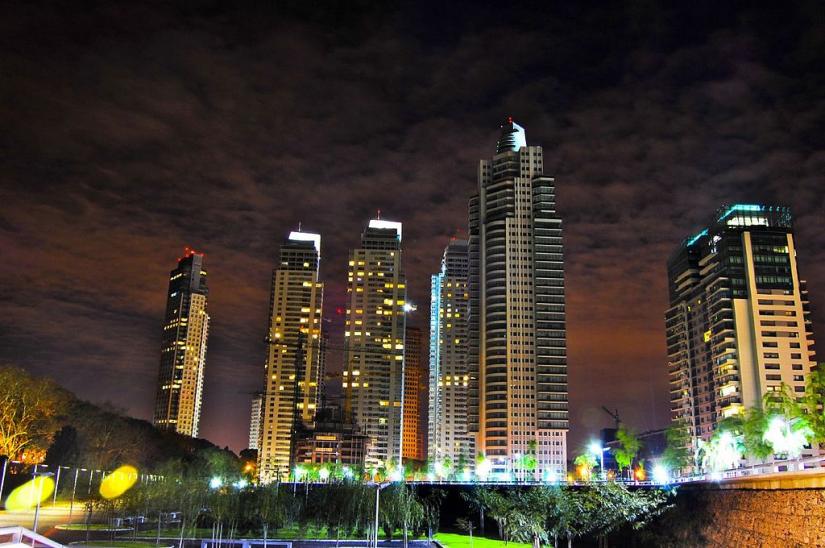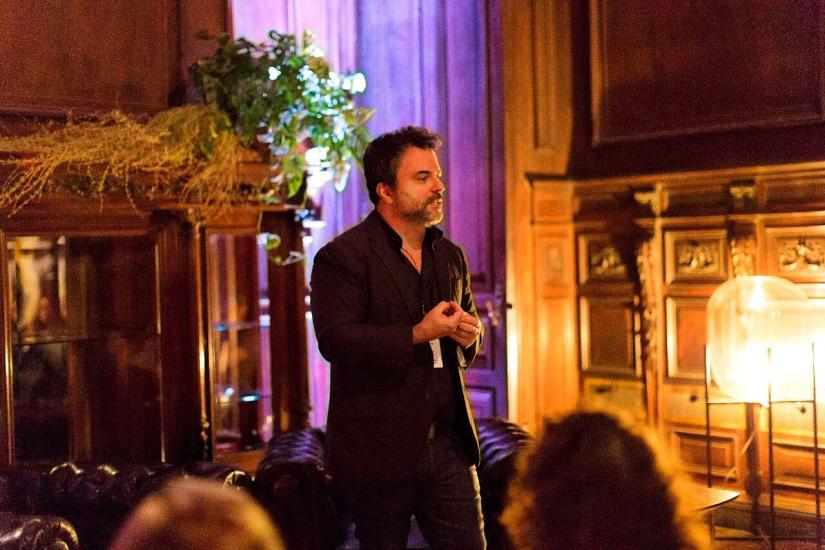Engineering creative places doesn’t happen by accident, and the Ultimo neighbourhood is testament to that. So on the other side of the world, how has Buenos Aires become the South American hub of creativity, innovation, talent and culture? And how has the Brooklyn Academy of Music helped the area to become a global technology and creativity hub?
We caught up with Diego Radivoy, General Director, Creative Industries, Buenos Aires City Government, and Katy Clark, President, Brooklyn Academy of Music (BAM) to uncover a common purpose.

UTS: Like Buenos Aires (pictured above) and Brooklyn, Sydney has a number of creative hubs, like Chippendale/Surry Hills, Redfern/Eveleigh and of course the many creative industry groups clustering around our own Ultimo/Pyrmont precinct, right where UTS is.
Our area is also bolstered by a strong presence of tech startups, and UTS is committed to supporting these two different clusters to engage and create new offerings.
Do your hubs see tech startups co-locating with creative businesses, or is it more about how innovation and tech can support creative business growth?
Diego Radivoy (DR): We are in charge of the administration of three creative districts located in different neighborhoods of Buenos Aires: the Audiovisual District, the Design District, and the Arts District.
Innovation and technology are a fundamental aspect. We have an incubator program that allows innovative projects from the audiovisual and design field to develop themselves under a full year mentorship program. Our training programs for professionals in the creative fields put a strong emphasis on innovative tech tendencies for the industry.
Katy Clark (KC): BAM connects to technological innovation primarily through its artists’ creative work. We also partner with tech companies to provide stimulating events for audiences, like our “Teknopolis” digital playground for all ages. As downtown Brooklyn has a growing Tech Triangle, which includes companies like MakerBot as well as New York University Polytechnic, our hope is that those creative partnerships will continue to grow. Having a hub for innovation in proximity to our Cultural District helps create a robust, vibrant and forward-thinking locale in our borough.
UTS: Who are your key stakeholders championing your vision? What were your tactics in bringing them along on the journey?
DR: Public administrations tend to be big and fragmented, so it’s important to make your vision accessible to all of the decision-makers in different government areas. When you are able to communicate to people from different backgrounds that the creative industries are also about creating economic growth, generating community, and finding innovative solutions for the urban agenda, then they will trust and support your mission, and even make it their own.
We also rely on key stakeholders with which we share a common set of values and goals: cultural institutions, representatives from the creative fields and private companies. We all want the creative industries to thrive because the district can rely on them to nurture social, economic and urban development - and impact the whole city.
KC: Our key stakeholders are the City of New York, our adventurous audiences, our board, our staff, our artists, and our donors and members. They provide ideas, input, and business connections which help us to realise our programs and events.
UTS: What kind of support do your stakeholders provide? How do you manage expectations?
DR: Our stakeholders provide extremely useful support, from co-financing an event, providing spaces and materials, finding media partners, or helping with curatorial aspects. For instance, in our Arts District, real estate owners are lending us historic properties that have been renewed for us to carry out artistic residencies. We meet our stakeholders regularly to hear their thoughts on different issues and try to address them.
We try to be as inclusive as possible, for example, by carrying out open calls for collaborators. And if we can’t include everybody, we try to rotate as much as possible to engage more widely in the long term. For instance, in May this year we co-produced a guided tour through our Arts District involving galleries and studios. We couldn’t include all galleries, so in November we came back for a second edition and invited the galleries that couldn’t participate in the first one.
KC: Our stakeholders provide a variety of kinds of support, including interest and curiosity, word-of-mouth on our efforts, financial contributions, and partnership ideas. Although we do offer a broad array of programs - theatre, dance, music, film, visual art, family events, thought-leading speakers, and arts education - each stakeholder supports and sees value in every area of our work.
UTS: We're also interested in the different governance structures of your precincts. For example, the Buenos Aires City Government drives this activity, meanwhile, I see the BAM has a Leadership Group with a Board of Trustees. What are the benefits of these different models?
DR (pictured below): Buenos Aires’s three creative districts have been created by law and their public masterplans are led by the City Government’s Creative Industries Direction. We have specific areas dedicated to each district’s administration and development and each district has a building that functions as its hub. The administration is in charge of activities such as events and workshops, outreach for the neighborhood community, and working closely with the district’s key stakeholders to define new strategic directions. In other programs we run, such as Art Basel Cities, we have the Board of Trustees model too - but most of the time we prefer to empower the whole community to work with us in changing the future.

We strongly believe in a balance between the public and private sector supporting culture, to create a powerful ecosystem of Creative Industries.
However, public involvement allows our administration to be the source of initiatives and the leadership for new projects. This aligns our actions with the district’s policy and broader objectives established by the Government, such as developing the city’s southern areas, democratising culture, and fostering the creative economy.
KC (pictured below): Our board of trustees is deeply committed to BAM’s mission of ‘adventurous arts, audiences, and ideas.’ Along with our executive, programming, development, and marketing staffs, they steer the ship and share ideas while being mindful of the challenges of a large, non-profit model. The City of NY also plays a major role - they own our buildings and BAM is one of a group of 33 NY cultural organisations which receive City support. In turn, we provide programming that serves the city’s diverse population.

UTS: How do you generate community?
DR: We have moments during the year where we rally people to celebrate each of the industries, that become part of the city’s calendar. Every year we celebrate Bookstore Night by opening to pedestrians one of Buenos Aires’ most popular avenues, filled with independent bookstores, who take their bookshelves out into the street until late in the night, along with open air talks and live music. This year we had more than 100,000 visitors in just one night!
We also hold several events that put our creative industries on the global map, like BA Fashion Week, BA Design Week, The Night of the Museums, BA International Music Fair and BA Independent Film Festival. We also have smaller gatherings for the professional sector.
It is also important to create the conditions for a more organic creative ecosystem. That is the aim of our Creative Districts policy: to lay down specific conditions that will allow for a community to be born naturally in a given territory. In our three creative districts we offer tax benefits for companies and organisations undertaking a cultural mission in the territory, and we work with them to help them have a more profound impact on the community.
KC: Certainly our free, public events are important, but we also share community spirit by being supportive of our neighborhood businesses and organisations. And, by offering programs that appeal to families, children, and marginalised peoples - and by presenting BAM as an accessible place - we hope to create an organisation that has something for everyone. Our programming can also address current social and political issues or provide forums for discussion - efforts we see as the responsibility of a leading community organisation.
Stay connected with UTS Innovation and Entrepreneurship - sign up to our newsletter and visit entrepreneurship.uts.edu.au for more.

